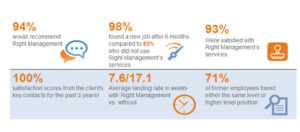(Hint: DON’T “Go to The Mattresses”)
The entire world is on the precipice of a recession. And the automotive industry will not escape the ramifications.
From plummeting consumer confidence (spurred by dramatically rising inflation) to supply chain delays, to shortages of essential components like semiconductors, to government-mandated regulations propelling faster adoption of electric vehicles, the auto industry is at the center of a whirling vortex of change. There is unprecedented demand for vehicles, including evolutionary electrified vehicles, but demonstrable constraints in all vehicle delivery. There have been barriers to continuous innovation. The issues must be addressed.
Normally, in a recession, capital expenditures are delayed. Operating costs are constrained. Most importantly, headcount is abruptly reduced, reshuffled, re-deployed. It’s the traditional answer to recession. “Go to the mattresses” is famously recommended by the fictitious “Don Corleone” and his “Family.” But waiting until the storm passes is not acceptable when you are on the brink of what could realistically be seen as the biggest automotive industry change (the move to electrification) in a half a century.
The savviest automotive executives are stressed, but also inspired, by the challenges, amplified by predictable skill mismatches between market needs, and workforce currently in place. This predicted recession, whether short and shallow or longer than forecasted, is fundamentally different than others. Any decline in the economy, coupled with an enormous skilled talent shortage, can plague the industry, for years and dramatically impede future growth. Strategic action is imperative to curtail declining innovation, and loss of profit.
Exacerbating all of this is the Covid 19 after-effect. In 2020/2021, leaders needed to move quickly, as social, and economic restrictions closed entire sectors of the world. Some strategies worked (hybrid working, 100% work from home, mass adoption of digital 24-hour communication, cloud-based meeting tools, and more). Rapid adoption of these, and other clever tactics among large automotive companies, demonstrated a willingness to change in the face of crisis. We applaud them. Now more change is mandated.
The future of talent, automotive’s most precious asset, is on the brink. Will automotive leaders continuously move to correctly shed, assess, select, incubate, grow, and precisely use its human capital? To survive, and thrive, they must:
Maintain and cultivate alumni and strong company brand: In an economy where you must precisely match skillsets with revenue generation, outplacement (the humane way to “say goodbye”) is even more important than the way you “say hello.” Former employees are the best source of referrals, and company references. Departing colleagues should feel great about their experience, and potentially willing to return when needed in a volatile economy. Or, at a minimum, they must be willing to recommend new people to continue their legacy. The “Great Resignation” has been accompanied by the “Great Regret” too. To take advantage of that, a strong reputation, and robust alumni network, are essential. Both are smart sources of new energy, new talent, new answers to pressing issues in the new auto economy.
Become expert in exact recruitment: There is a shortage of talent, as the retirement of one generation of automotive experts clashes with a smaller generation of eager, but inexpert, future employees. A record low unemployment rate has complicated this. Frankly, the automotive industry has not been attracting new, bright, savvy, dedicated people at an optimal rate. Alternative sources of talent must be found, outside of the traditional 4-year universities, and meticulously cultivated. To attract, a company’s brand and reputation must be impeccable, transparent, and flexible. The company’s mission, values, culture must entice the best of the best, and its leadership must be shining examples.
Build and sustain internal talent mobility: The best companies already use, and are perfecting, sophisticated employee assessment tools, active coaching, job specific re-skilling and up-skilling as well as humane outplacement processes. Using these assists leaders to gain confidence. By realizing the greatest possible value from existing employees, and empathetically helping others to transition, a full range of new possibilities materializes.
Like all transformative change, you benefit from having the right partner, with the right tools and expertise to address even insurmountable issues. The Right Management team can help with all three areas of workforce adjustment, deployment and cultivation. Please contact us.





